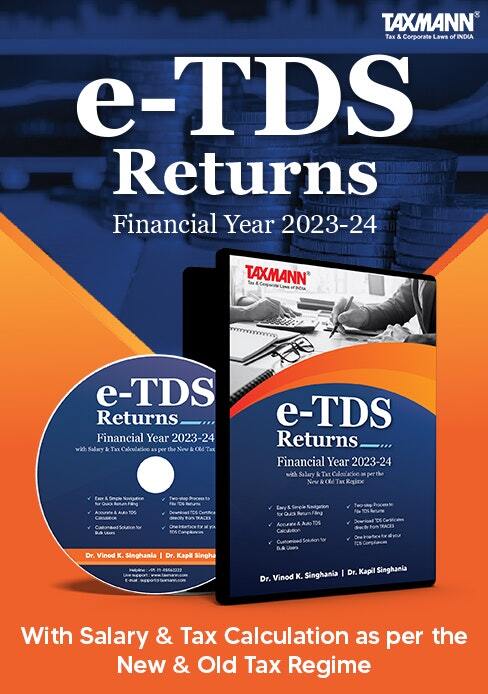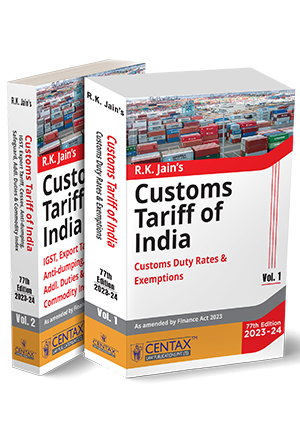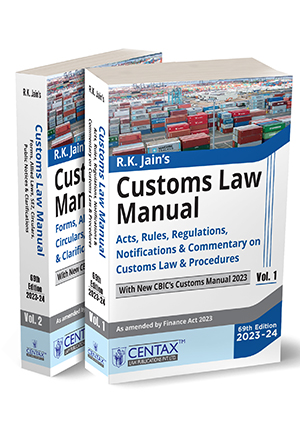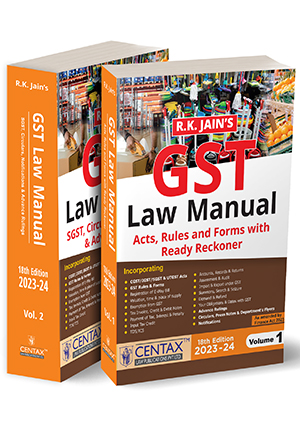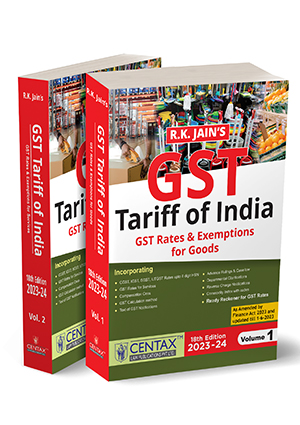What is Capital Budgeting? | Financial Management
- Other Laws|Blog|
- 17 Min Read
- By Taxmann
- |
- Last Updated on 30 January, 2024

Table of Contents
- Capital Budgeting
- Significance of Capital Budgeting Decisions
- Process of Capital Budgeting
- Capital Budgeting Decisions (Situation Decisions)
- Methods used for Capital Budgeting Decisions
- Capital Rationing
Check out Taxmann's Financial Management & Business Data Analytics (FMDA) | CRACKER which covers all past exam questions & detailed answers for the CMA-Intermediate exam by ICMAI till Dec. 2023. It also includes tabular summaries at the beginning of each chapter, module-wise marks distribution and trend analysis of past exams. CMA Intermediate | New Syllabus | Dec. 2024 Exam
1. Capital Budgeting
Charles. T. Horngren defined capital budgeting as ‘long-term planning for making and financing proposed capital out lay.’
According to Keller and Ferrara, ‘capital Budgeting represents the plans for the appropriation and expenditure for fixed asset during the budget period.’
Robert N. Anthony defined as ‘capital budget is essentially a list of what management believes to be worthwhile projects for the acquisition of new capital assets together with the estimated cost of each product.’
1.1 Importance or Need of Capital Budgeting Decisions
- Expansion: The firm requires additional funds to invest in fixed assets when it intends to expand the production facilities in view of the increase in demand for their product in near future. Accordingly, the current assets will increase. In case of expansion the existing infrastructure – like plant, machinery and other fixed assets is inadequate, to carry out the increased production volume. Thus, the firm needs funds for such project.
- Replacement: The machines and equipment used in production may either wear out or may be rendered obsolete due to new technology. The productive capacity and competitive ability of the firm may be adversely affected. The firm needs funds or modernization of a certain machines or for renovation of the entire plant etc., to make them more efficient and productive. Modernization and renovation will be a substitute for total replacement, where renovation or modernization is not desirable or feasible, funds will be needed for replacement.
- Diversification: If the management of the firm decided to diversify its production into other lines by adding a new line to its original line, the process of diversification would require large funds for long-term investment.
- Buy or Lease: This is a most important decision area in financial management whether the firm acquire the desired equipment and building on lease or buy it. If the asset is acquired on lease, there have to be made a series of annual or monthly rental payments. If the asset is purchased, there will be a large initial commitment of funds, but not further payments. The decision-making area is which course of action will be better to follow? The costs and benefits of the two alternative methods should be matched and compared to arrive at a conclusion.
- Research and Development: The existing production and operations can be improved by the application of new and more sophisticated production and operations management techniques. New technology can be borrowed or developed in the laboratories. There is a greater need of funds for continuous research and development of new technology for future benefits or returns from such investments.
2. Significance of Capital Budgeting Decisions
The key function of the financial management is the selection of the most profitable portfolio of capital investment.
It is the most important area of decision-making of the financial manager because any action taken by the manager in this area affects the working and the profitability of the firm for many years to come. Capital budgeting decisions are considered important for many reasons. Some of them are discussed below:
- Crucial Decisions: Capital budgeting decisions are crucial, affecting all the departments of the firm. So, the capital budgeting decisions should be taken very carefully.
- Long-run Decisions: The implications of capital budgeting decisions extend to a longer period in the future. The consequences of a wrong decision will be disastrous for the survival of the firm.
- Large Amount of Funds: Capital budgeting decisions involve spending large amount of funds. As such proper care should be exercised to see that these funds are invested in productive purchases.
- Rigid: Capital budgeting decision cannot be altered easily to suit the purpose. Because of this reason, when once funds are committed in a project, they are to be continued till the end, loss or profit no matter.
- Cash Forecast: Capital investment requires substantial funds which can only be arranged by making determined efforts to ensure their availability at the right time. Thus, it facilitates cash forecast.
- Wealth-Maximization of Shareholders: The impact of long-term capital investment decisions is far reaching. It protects the interests of the shareholders and of the enterprise because it avoids over-investment and under-investment in fixed assets. By selecting the most profitable projects, the management facilitates the wealth maximization of equity shareholders.
- Helps in Policy Making: It facilitates the management in making of the long term plans to assist in the formulation of general policy.
3. Process of Capital Budgeting
The Steps are discussed below:
- Generation of Project: Depending upon the nature of the firm, investment proposals can emanate from a variety of sources. Projects may be classified into five categories.
-
- New products or expansion of existing products.
- Replacement of equipment or buildings.
- Research and development.
- Exploration.
- Others like acquisition of a pollution control device etc.
Investment proposals should be generated for the productive employment of firm’s funds. However, a systematic procedure must be evolved for generating profitable proposals to keep the firm healthy.
- Evaluation of the Project: The evaluation of the project may be done in two steps. First the costs and benefits of the project are estimated in terms of cash flows and secondly the desirability of the project is judged by an appropriate criterion. It is important that the project must be evaluated without any prejudice on the part of the individual. While selecting a criterion to judge the desirability of the project, due consideration must be given to the market value of the firm.
- Selection of the Project: After evaluation of the project, the project with highest return should be selected. There is no hard and fast rule set for the purpose of selecting a project from many alternative projects. Normally the projects are screened at various levels. However, the final selection of the project vests with the top-level management.
- Execution of Project: After selection of a project, the next step in capital budgeting process is to implement the project. Thus, the funds are appropriated for capital expenditures. The funds are spent in accordance with appropria- tions made in the capital budget funds for the purpose of project execution should be spent only after seeking format permission for the controller. The follow-up comparison of actual performance with original estimates ensures better control.
4. Capital Budgeting Decisions (Situation Decisions)
On the basis of situation decision, firm may be confronted with three types of capital budgeting decisions:
- Accept-reject Decision: Business firm is confronted with alternative investment proposals. That means you have to take decision whether the project is accepted or rejected. So, accept-reject decision is a fundamental decision in capital budgeting. If the project is accepted, the firm would invest in it, if the proposal is rejected, the firm does not invest in it.
- Mutually Exclusive Project Decision: ‘Mutually exclusive projects’ is used generally in the capital budgeting process where the firms choose a single project on the basis of certain parameters out of the set of the projects where acceptance of one project will lead to rejection of the other projects. In case of mutually exclusive projects, the project with highest net present value or the highest IRR or the lowest payback period is preferred and a decision to invest in that select project excluded all other projects from consideration even if they individually have positive NPV or higher IRR than hurdle rate or shorter payback period than the reference period.
- Capital Rationing Decision: Capital rationing refers to the choice of investment proposals under financial constraints in terms of a given size of capital expenditure budget. The objective of capital rationing is to select the combination of projects would be the maximisation of the total NPV. It is concerned with the selection of a group of investment proposals out of many investment proposals acceptable under the accept-reject decision. Capital rationing employs ranking of the acceptable investment projects. The projects can be ranked on the basis of a predetermined criterion such as the rate of return. The projects are ranked in the descending order of the rate of return.
5. Methods used for Capital Budgeting Decisions
(a) Traditional or Non-Discounted Cash Flow (Non-DCF) Techniques:
- Payback Period
- Payback Reciprocal
- Payback Profitability
- Average or Accounting Rate of Return (ARR)
(b) Discounted Cash Flow (DCF) or Time-Adjusted Techniques:
- Net Present Value (NPV)
- Profitability Index
- Internal Rate of Return (IRR)
- Discounted Payback Period
- Modified NPV
- Modified IRR
- Adjusted Present Value
5.1 Non-discounted or Traditional Techniques
1. Payback Period (PBP) Method
The PBP method is the simplest way to budget for a new project. It measures the amount of time it will take to earn enough cash inflows from your project to recover what you invested. It is the most popular and widely recognized traditional methods of evaluating the investment proposals. It can be defined as the number of years to recover the original capital invested in a project.
(a) When cash flows are uniform:
If the proposed project’s cash inflows are uniform the following formula can be used to calculate the payback period.
Payback Period = Initial Investment/Annual Cash Inflows.
(b) When cash flows are not uniform:
When the project’s cash inflows are not uniform, but vary from year to year payback period is calculated by the process of cumulating cash inflows till the time when cumulative cash flows become equal to the original investment outlay.
Advantages: The following are the advantages of the payback period method:
(i) Easy to calculate: It is one of the easiest methods of evaluating the investment projects. It is simple to understand and easy to compute.
(ii) Knowledge: The knowledge of payback period is useful in decision-making, the shorter the period better the project.
(iii) Protection from loss due to obsolescence: This method is very suitable to such industries where mechanical and technical changes are routine practice and hence, shorter payback period practice avoids such losses.
(iv) Easily availability of information: It can be computed on the basis of accounting information, what is available from the books.
Disadvantages: However, the payback period method has certain disadvantages and limitations:
(i) Failure in taking cash flows after payback period: This method is not taking into account the cash flows received by the company after the payback period.
(ii) Not considering the time value of money: It does not take into account the time value of money.
(iii) Non-considering of interest factor: It does not take into account the interest factor involved in the capital outlay.
(iv) Maximisation of market value not possible: It is not consistent with the objective of maximizing the market value of share.
(v) Failure in taking magnitude and timing of cash inflows: It fails to consider the pattern of cash inflows i.e., the magnitude and timing of cash inflows.
Accept-Reject Decision:
The payback period can be used as an accept or reject criterion as well as a method of ranking projects. The payback period is the number of years to recover the investment made in a project. If the payback period calculated for a project is less than the maximum payback period set-up by the company, it can be accepted. As a ranking method it gives the highest rank to a project which has the lowest payback period, and the lowest rank to a project with the highest payback period. Whenever a company faces the problem of choosing among two or more mutually exclusive projects, it can select a project on the basis of payback period, which has shorter period than the other projects.
2. Payback Reciprocal
It is the reciprocal of Payback Period, i.e., 1÷ Payback Period. Therefore,
Payback Reciprocal = Average Annual Net Cash Inflow after Taxes (i.e. CFAT p.a.)/ Initial Investment
Higher the payback reciprocal, better is the project.
The Payback Reciprocal is considered to be an approximation of the Internal Rate of Return, if—
(a) The life of the project is at least twice the payback period; and
(b) The project generates equal amount of the annual cash inflows.
3. Payback Profitability
As the profitability beyond the Payback Period is not taken into consideration in Payback Period method, the projects with higher Payback period are rejected though such projects with longer life may generate higher benefits after recov- ering its initial investment. In Payback Profitability method, the profitability beyond the payback period is considered and projects generating higher benefits after the recovery of initial investment are considered for selection.
Payback Profitability = Net Cash Inflow after Taxes after recovering the Initial Investment, i.e., Total Net Cash Inflow after Taxes – Initial Investment.
4. Accounting or Average Rate of Return (ARR) Method
According to Solomon, Accounting Rate of Return can be calculated as the ratio of average net income to the initial investment. On the basis of this method, the company can select all those projects whose ARR is higher than the minimum rate established by the company. It can reject the projects with an ARR lower than the expected rate of return.
This method also helps the management to rank the proposal on the basis of ARR.
Accounting Rate of Return (ARR) = Average Net Income/Original Investment
Or,
Accounting Rate of Return (ARR) = Average Net Income/Average Investment.
Advantages: The following are the advantages of ARR method:
(i) It is very simple to understand and calculate;
(ii) It can be readily computed with the help of the available accounting data;
(iii) It uses the entire stream of earnings to calculate the ARR.
Disadvantages: This method has the following limitations:
(i) It is not based on cash flows generated by a project;
(ii) This method does not consider the objective of wealth maximization;
(iii) It ignores the length of the project’s useful life;
(iv) If does not take into account the fact that the profile can be re-invested; and
(v) It ignores the time value of money.
Accept-Reject Decision:
With the help of the ARR, the financial decision maker can decide whether to accept or reject the investment proposal. As an accept-reject criterion, the actual ARR would be compared with a pre-determined or a minimum required rate of return or cut-off rate. A project would qualify to be accepted if the actual ARR is higher than the minimum desired ARR. Otherwise, it is liable to be rejected. Alternatively, the ranking method can be used to select or reject proposals. Thus, the alternative proposals under consideration may be arranged in the descending order of magnitude, starting with the proposal with the highest ARR and ending with the proposal having the lowest ARR. Obviously, projects having higher ARR would be preferred to projects with lower ARR.
5.2 Discounted Cash Flow Techniques
1. Net Present Value (NPV) Method
Net Present Value (NPV) is the difference between the present value of cash inflows and the present value of cash outflows over a period of time. NPV is used in capital budgeting and investment planning to analyze the profitability of a projected investment or project. In other words, it is a method of calculating the present value of cash flows (inflows and outflows) of an investment proposal using the cost of capital as an appropriate discounting rate.
Steps of computation of Net Present Value (NPV):
(i) Estimation of future cash inflows.
(ii) An appropriate rate of interest should be selected to discount the cash flows. Generally, this will be the “cost of capital” of the company, or required rate of return.
(iii) The present value of inflows and outflows of an investment proposal has to be computed by discounting them with an appropriate cost of capital.
(iv) The net value is the difference between the present value of cash inflows and the present value of cash outflows.
Accept-Reject Decision:
If, NPV>Zero then, Accept
If, NPV<Zero then, Reject
If, NPV=0 then, May accept or reject
Advantages: The following are the advantages of the Net Present Value (NPV) methods:
(i) Consideration to total Cash Inflows: The NPV methods considers the total cash inflows of investment opportunities over the entire life-time of the projects unlike the payback period methods.
(ii) Recognition to the Time Value of Money: This method explicitly recognizes the time value of money, which is investable for making meaningful financial decisions.
(iii) Changing Discount Rate: Due to change in the risk pattern of the investor different discount rates can be used.
(iv) Best decision criteria for Mutually Exclusive Projects: This Method is particularly useful for the selection of mutually exclusive projects. It serves as the best decision criteria for mutually exclusive choice proposals.
(v) Maximisation of the Shareholders Wealth: Finally, the NPV method is instrumental in achieving the objective of the maximization of the share- holders’ wealth. This method is logically consistent with the company’s objective of maximizing shareholders’ wealth in terms of maximizing market value of shares, and theoretically correct for the selections of investment proposals.
Disadvantages: The following are the disadvantages of the net present value method:
(i) It is difficult to understand and use.
(ii) The NPV is calculated by using the cost of capital as a discount rate. But the concept of cost of capital itself is difficult to understand and determine.
(iii) It does not give solutions when the comparable projects are involved in different amounts of investment.
(iv) It does not give correct answer to a question when alternative projects of limited funds are available, with unequal lives.
2. Profitability Index (PI) Method
Profitability index method measures the present value of benefits for every rupee investment. In other words, it involves the ratio that is created by comparing the ratio of the present value of future cash flows from a project to the initial investment in the project. This method is also known as ‘Benefit Cost Ratio’.
Profitability Index = Present value of cash outflow or Initial Investment.
Accept-Reject Decision:
If, PI>1 then, Accept
If, PI<1 then, Reject
If, PI=0 then, May accept or reject
Advantages: The advantages of this method are:
(i) It takes into account the time value of money.
(ii) It helps to accept/reject investment proposal on the basis of value of the index.
(iii) It is useful to rank the proposals on the basis of the highest/lowest value of the index.
(iv) It takes into consideration the entire stream of cash flows generated during the life of the asset.
Disadvantages: However, this technique suffers from the following disadvantages:
(i) It is somewhat difficult to compute.
(ii) It is difficult to understand the analytical of the decision on the basis of profitability index.
3. Internal Rate of Return (IRR) Method
Internal Rate of Return (IRR) is one such technique of capital budgeting. It is the rate of return at which the net present value of a project becomes zero. We call it ‘internal’ because it does not take any external factor (like inflation etc.) into consideration. IRR method follows discounted cash flow technique which takes into account the time value of money. The internal rate of return is the interest rate which equates the present value of expected future cash inflows with the initial capital outlay. In other words, it is the rate at which NPV is equal zero.
Computation of IRR:
(i) Compute the present value of the cash flows from an investment, by using arbitrary by selected interest rate.
(ii) Then compare the present value so obtained with capital outlay.
(iii) If the present value is higher than the cost, then the present value of inflows is to be determined by using higher rate.
(iv) This procedure is to be continued until the present value of the inflows from the investment are approximately equal to its outflow.
(v) The interest rate that brings about equality is the internal rate of return.
Accept-Reject Decision:
Accept if IRR > k
Reject if IRR < k
May accept or reject if IRR = k
Where, ‘k’ is the cost of capital.
Advantages: The following are the advantages of the IRR method:
(i) Consideration of time of money: It considers the time value of money.
(ii) Consideration of total Cash Flows: It taken into account the cash flows over the entire useful life of the asset.
(iii) Maximising of shareholders’ wealth: It is in conformity with the firm’s objective of maximizing owner welfare.
(iv) Provision for risk and uncertainty: This method automatically gives weight to money values which are nearer to the present period than those which are distant from it. Conversely, in case of other methods like ‘Payback Period’ and ‘Accounting Rate of Return’, all money units are given the same weight which is unrealistic. Thus, the IRR is more realistic method of project valuation. This method improves the quality of estimates reducing the uncertainty to minimum.
(v) Elimination of pre-determined discount rate: Unlike the NPV method, the IRR method eliminates the use of the required rate of return which is usually a pre-determined rate of cost of capital for discounting the cash flow consistent with the cost of capital. Therefore, the IRR is more reliable measure of the profitability of the investment proposals.
Limitation: The following are the limitations of the IRR:
(i) It is very difficult to understand and use.
(ii) It involves a very complicated computational work.
(iii) It may not give unique answer in all situations.
(iv) The assumption of re-investment of cash flows may not be possible in practice.
(v) In evaluating the mutually exclusive proposals, this method fails to select the most profitable project which is consistent with the objective of maximization of shareholders wealthy.
4. Discounted Payback Period (DPBP) Method
The discounted payback period is a capital budgeting procedure used to determine the profitability of a project. A discounted payback period gives the number of years it takes to break even from undertaking the initial expenditure, by discounting future cash flows and recognizing the time value of money. Under this method the discounted cash inflows are calculated and where the discounted cash flows are equal to original investment then the period which is required is called discounting Payback period. While calculating discounting cash inflows the firm’s cost of capital has been used.
Procedure for computation of Discounted Payback Period:
Step 1: Determine the Total Cash Outflow of the project. (Initial Investment)
Step 2: Determine the Cash Inflow after Taxes (CFAT) for each year.
Step 3: Determine the present value of net cash inflow after taxes (CFAT) = CFAT of each year × PV Factor for that year.
Step 4: Determine the cumulative present value of CFAT of every year.
Step 5: Find out the Discounted Payback Period as the time at which cumulative DCFAT equals Initial Investment.
Accept-Reject Decision:
The shorter a discounted payback period is means the sooner a project or investment will generate cash flows to cover the initial cost. A general rule to consider when using the discounted payback period is to accept projects that have a payback period that is shorter than the target timeframe. So, out of two projects, selection should be based on the period of discounting payback period (lesser payback period should be preferred.)
The shorter the discounted payback period, the quicker the project generates cash inflows and breaks even.
While comparing two mutually exclusive projects, the one with the shorter discounted payback period should be accepted.
Advantages: Following are the advantages of discounted payback period:
(i) The discounted payback period is used as part of capital budgeting to determine which projects to take on.
(ii) More accurate than the standard payback period calculation, the discounted payback period factors in the time value of money.
(iii) The discounted payback period formula shows how long it will take to recoup an investment based on observing the present value of the project’s projected cash flows.
(iv) The shorter a discounted payback period is, means the sooner a project or investment will generate cash flows to cover the initial cost.
Disadvantages: Following are the disadvantages of discounted payback period:
(i) One of the disadvantages of discounted payback period analysis is that it ignores the cash flows after the payback period.
(ii) Both payback and discounted payback method do not take into account the full life of the project. The overall benefit and profitability of a project cannot be measured under these methods because any cash flows beyond the payback period is ignored.
(iii) It may become a relative measure. In some situations, the discounted payback period of the project may be longer than the maximum desired payback period of the management but other measures like Accounting Rate of Return (ARR) and Internal Rate of Return (IRR) etc. may favour the project.
(iv) The accuracy of the output only depends upon the accuracy of the input provided, like the accuracy of figures of cash flows, the estimation of the timing of cash flows which affects their present values, and the accuracy of the discount rate to be used etc.
5. Modified Net Present Value (MNPV)
One of the limitations of NPV method is that reinvestment rate in case of NPV is Cost of Capital (k). However, in case of MNPV, different reinvestment rates for the cash inflows over the life of the project may be used. Under this modified approach, terminal value of the cash inflows is calculated using such expected reinvestment rate(s).
Thereafter, MNPV is determined with present value of such terminal value of the cash inflows and present value of the cash outflows using cost of capital
(k) as the discounting factor.
Terminal value is the sum of the compounded value of cash inflows of different years at the end of the life of the project.
6. Modified Internal Rate of Returns (MIRR)
The Modified Internal Rate of Return (MIRR) is a financial measure of an investment’s attractiveness. It is used in capital budgeting to rank alternative investments of equal size. As the name implies, MIRR is a modification of the Internal Rate of Return (IRR) and as such aims to resolve some problems with the IRR.
IRR assumes that interim positives cash flows are reinvested at the rate of returns as that of the project that generated them. This is usually an unrealistic scenario. To overcome this draw back a new technique emerges. Under MIRR the earlier cash flows are reinvested at firm’s rate of return and finding out the terminal value. MIRR is the rate at which present value of terminal values equal to outflow (Investment).
Advantages:
(i) The standard internal rate of return calculation may overstate the potential future value of a project.
(ii) MIRR can distort the cost of reinvested growth from stage to stage in a project.
(iii) MIRR allows for adjusting the assumed rate of reinvested growth for different stages of a project.
Disadvantages:
The disadvantage of MIRR is that it asks for two additional decisions, i.e.,
determination of financing rate and cost of capital.
7. Adjusted Net Present Value
For determining NPV, weighted average cost of capital is used as the discounting factor, based on the assumption that every project is financed by the same proportions of debt and equity as found in the capital structure of the firm. However, that may not be true. Moreover, tax advantages (savings in tax) due to use of borrowed fund is not usually considered in financial appraisal of investment proposals discussed so far. But impact of debt financing can be incorporated using Adjusted Present Value Method with an adjustment of tax aspects of debt financing with the Base Case NPV.
Base Case NPV is the NPV under the assumption that the project is all-equity financed.
Adjusted NPV = Base case NPV + NPV of Tax Shields arising out of financing decisions associated with the project.
6. Capital Rationing
There may be situations where a firm has a number of independent projects that yield a positive NPV or having IRR more than it’s cut off rate, PI more than 1, i.e., the projects are financially viable, hence, acceptable. However, the most important resource in investment decisions, i.e., funds, are not sufficient enough to undertake all the projects. In such a case, the projects are selected in such a way so that NPV becomes maximum in order to maximize wealth of shareholders. Investment planning in such situation is Capital Rationing.
There are two possible situations of Capital Rationing:
(i) Generally, firms fix up maximum amount that can be invested in capital projects, during a given period of time, say a year. This budget ceiling imposed internally is called as Soft Capital Rationing or Internal Capital Rationing.
(ii) There may be a market constraint on the amount of funds available for investment during a period. This inability to obtain funds from the market, due to external factors is called Hard Capital Rationing or External Capital Rationing.
Different proposals may be classified into two categories: Divisible and Indivisible
In case of divisible projects, part acceptance of the project is possible. Indivisible projects are either to be accepted in its entirety or to be rejected, i.e., part acceptance is not possible. For divisible projects, PI approach help in selecting the proposals providing the highest NPV. For indivisible projects, through trial-and-error methods, best combination of the projects with the highest NPV may be ascertained.
For Divisible Projects:
Rank the projects following PI and arrange them in descending order. Go on selecting the projects till the fund is available.
For Indivisible Projects:
Determine all the feasible combinations of the projects and rank them according to total NPV of the combinations.
Select the combination with the highest NPV.
Disclaimer: The content/information published on the website is only for general information of the user and shall not be construed as legal advice. While the Taxmann has exercised reasonable efforts to ensure the veracity of information/content published, Taxmann shall be under no liability in any manner whatsoever for incorrect information, if any.
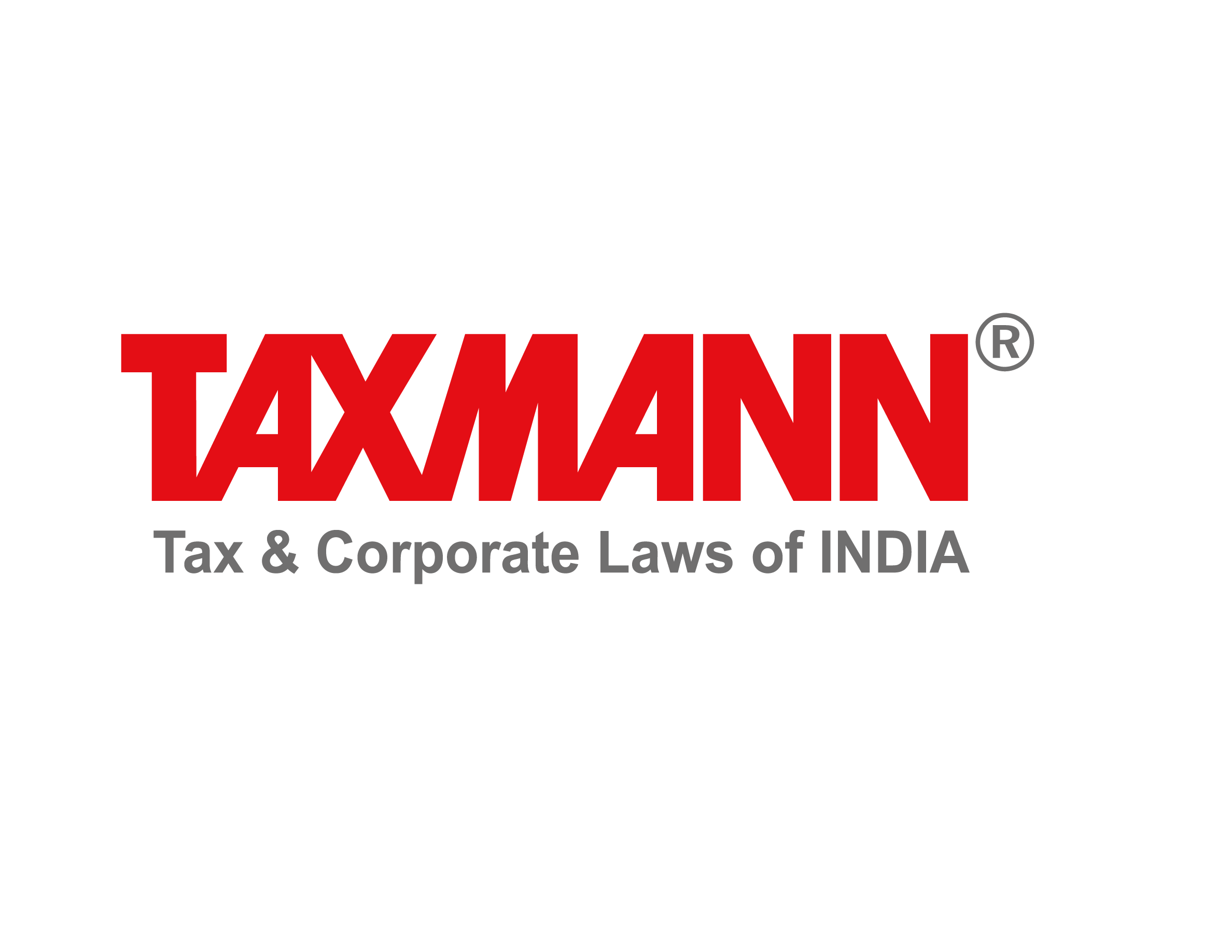
Taxmann Publications has a dedicated in-house Research & Editorial Team. This team consists of a team of Chartered Accountants, Company Secretaries, and Lawyers. This team works under the guidance and supervision of editor-in-chief Mr Rakesh Bhargava.
The Research and Editorial Team is responsible for developing reliable and accurate content for the readers. The team follows the six-sigma approach to achieve the benchmark of zero error in its publications and research platforms. The team ensures that the following publication guidelines are thoroughly followed while developing the content:
- The statutory material is obtained only from the authorized and reliable sources
- All the latest developments in the judicial and legislative fields are covered
- Prepare the analytical write-ups on current, controversial, and important issues to help the readers to understand the concept and its implications
- Every content published by Taxmann is complete, accurate and lucid
- All evidence-based statements are supported with proper reference to Section, Circular No., Notification No. or citations
- The golden rules of grammar, style and consistency are thoroughly followed
- Font and size that’s easy to read and remain consistent across all imprint and digital publications are applied
